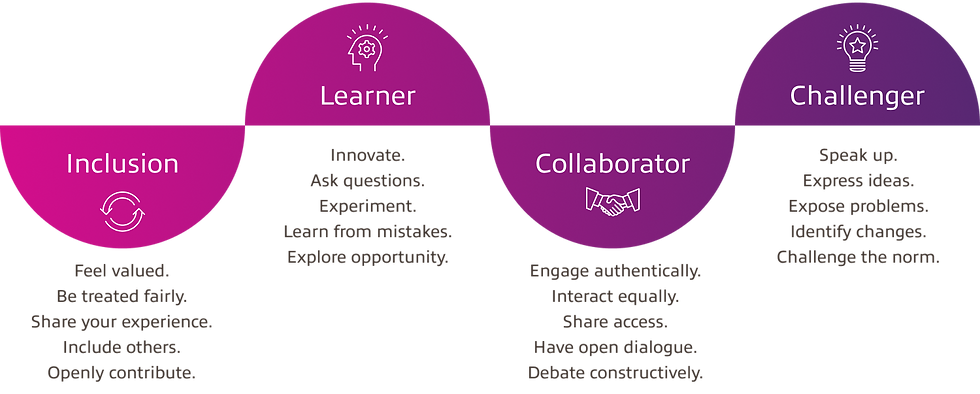Linking Collaboration and Psychological Safety
- CtoC Finance

- Jul 31
- 2 min read
Beyond mere teamwork, true collaboration fosters innovation, productivity, and employee well-being.
However, the depth of effective collaboration extends beyond project management tools and shared calendars.
It hinges on a concept known as psychological safety.
What Is Psychological Safety?
Psychological safety refers to an individual’s perception of the consequences of taking an interpersonal risk within a group or team.
In psychologically safe environments, team members feel comfortable expressing their thoughts, ideas, and concerns without fear of negative repercussions.
It’s the feeling of being able to speak up, ask questions, and admit mistakes without judgment or retaliation.
The Collaborative Advantage
Collaboration and psychological safety are intertwined.
Collaboration thrives when communication flows freely.
Teams that openly share information, insights, and feedback are more likely to innovate and solve complex problems.
Psychological safety enables this open communication.
When team members feel safe, they contribute their unique perspectives, challenge assumptions, and engage in constructive debates.
Collaboration involves taking risks—sharing half-baked ideas, proposing unconventional solutions, and experimenting with new approaches.
Psychological safety encourages risk-taking.
When team members know they won’t face ridicule or punishment for suggesting novel ideas, they become more creative and daring.
Collaborative teams learn from one another.
They share knowledge, experiences, and best practices.
Psychological safety fuels this learning culture.
When mistakes are seen as opportunities for growth rather than failures, team members actively seek feedback and continuous improvement.
Effective collaboration transcends hierarchies and embraces diversity.
It values different perspectives, backgrounds, and expertise.
Psychological safety ensures that all voices are heard.
Inclusive teams leverage the richness of diverse viewpoints to make better decisions.
Collaborating teams encounter disagreements.
Healthy conflict drives progress.
Psychological safety allows for respectful conflict resolution.
Team members can express dissent without damaging relationships.
They focus on finding solutions rather than winning arguments.

Creating a psychologically safe environment requires intentional effort.
Leaders must demonstrate vulnerability, admit mistakes, and actively seek input.
When leaders show that it’s safe to be imperfect, team members follow suit.
Establish team norms that prioritize psychological safety.
Encourage curiosity, active listening, and empathy.
Make it clear that dissenting opinions are valued and won’t lead to retribution.
Regularly provide constructive feedback.
Celebrate efforts, not just outcomes.
Encourage feedback loops where team members learn from each other.
Treat failures as learning opportunities.
Analyze what went wrong and how to improve.
Avoid blame games; focus on solutions.
The Ripple Effect
Collaboration and psychological safety create a positive feedback loop.
As teams collaborate effectively, trust grows.
As trust grows, psychological safety deepens.
And as psychological safety deepens, collaboration becomes even more powerful.
So, the next time you’re in a brainstorming session, a team meeting, or a virtual collaboration space, remember that true collaboration isn’t just about hitting deadlines.
It’s about creating an environment where everyone feels safe to contribute their best ideas.

How are you going to promote the link between collaboration and psychological safety for your team?
~To the health and wealth of you and your business~




Comments